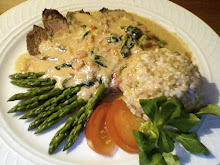To travel as a foodie one should always be prepared. Before I leave for my trip I do some research on the area and where I will be staying. Then, based on what I will have available when I arrive, I will prepare and pack some of my own staple foods. Better quality foods have become trendy so it has been easier to find good food when traveling on the road. Grocery stores are carrying better products around the country and even farmers’ markets are more available. I use http://www.eatwellguide.org to help me locate natural stores and restaurants. Airport restaurants are starting to catch on to the market for good whole foods. For the past year, eating on the road has become easier with a little preparation on my part.
Even though options are better, I continue to bring items for the plane ride and for meals when I arrive at my destination. Some cities will not have a grocery store that has everything I need or I might not have transportation to get to a store. Many business travelers find that available restaurants may be closed when they arrive late. For this reason they should always try to come prepared.
Before I leave home I will research what type of hotel amenities and transportation will be available. Some hotel rooms have microwaves or a full kitchen and I will prepare food at home based on my accommodations. The best scenario is when I stay at a hotel with a full kitchen like a Homewood Suites or other residence type hotel and I have transportation to a Whole Foods Supermarket nearby. Of course this is rare so I try a to prepare what I need before I leave. I prepare some foods that I can keep in a small cooler and consume in the first few days. The night before or early in the morning I will prep for my trip. For example, I will boil one egg for each day. I can eat them for breakfast or with a salad. I cook different meats that will reheat well. I bake a couple of chicken breasts and grill or broil beef like steak or london broil. The chicken can also be made into a chicken salad which is perfect for a snack on the plane. Carrots keep well the entire trip. I wash and cut the ends of the carrots and take one carrot per day. Celery, broccoli, and cauliflower are also easy to keep in the small cooler and great for snacks. I make my own hummus and pesto and they are both great with the vegetables and other meals. Cheese, prosciutto, and olives are usually in my cooler as well. I will bring any type of food I enjoy that can be consumed in the first few days or any item that is inconvenient to purchase at my destination.
There are dry goods I will also take with me. A few small potatoes, packaged cooked brown or basmati rice, a can of garbanzo beans, nuts, french bread, packaged dry miso soup, and coffee are items that are easy to put in my suitcase. I will bring a fork and a sturdy plastic knife. If you are checking a suitcase then you can bring items that you cannot take through airport security like knives. I bring a small microwavable dish and plate. If I am staying at a hotel with a kitchen then I take what spices I will cook with like turmeric, cumin, red pepper, ginger and garlic.
Before I leave for the airport I will pack my cooler with a few bags of ice and put the dry goods in my suitcase. Remember there is still a 3-1-1 rule at the airport (three ounces, one quart size baggy, one per person). So as long as your food is not a liquid or gel then it is fine. Sometimes food will have packets of sauce under three ounces and I will put them in the ziploc with my toiletries. When going through security I keep the ice in my cooler. Only a couple of airports have said no to ice. But if I mention I am on a special diet than it is usually okay. If the TSA agents object to the ice, I can always get more from a concession when I am through security.
At first the preparation may seem like extra work, but soon you will realize how easy it can be worked into your usual routine. If you try just a few of these suggestions than you will have more control over your diet. When you are at the airport you will no longer have to eat something you normally would not eat because it is your only option. When you arrive at your hotel you will always have a meal just in case the restaurant is closed or does not offer healthy selections. Also the amount of time to locate a restaurant when you do arrive can be frustrating and time consuming. During your busy day, breakfast and lunch are less rushed and more convenient then ordering from a menu at a restaurant. And of course the amount of money you save and the quality of food you will be eating will be the best incentives to start traveling like a foodie.
Stay tuned for the next blog about arriving at the airport and eating during the plane ride. I will share my favorite airport eateries and I would love to hear about other suggestions and tips.




